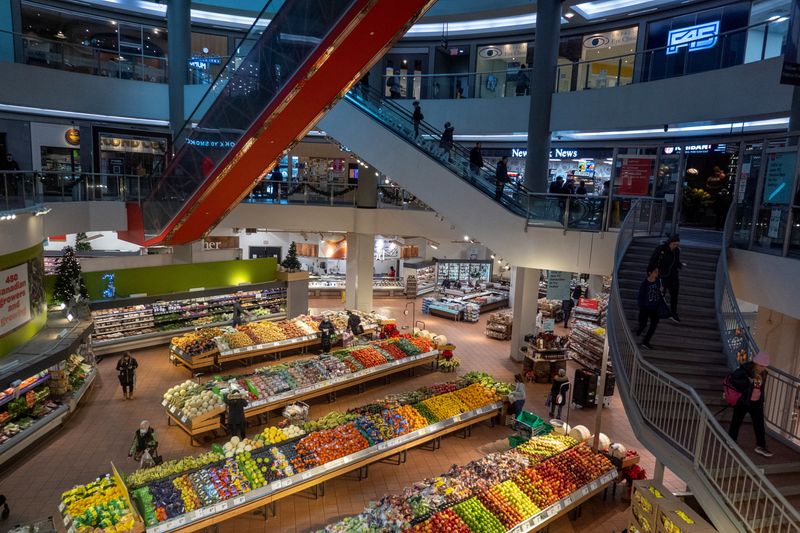Canada’s inflation rate eases more than expected in October on gas prices
2023.11.21 09:06

© Reuters. FILE PHOTO: People shop at a grocery store in Toronto, Ontario, Canada November 22, 2022. REUTERS/Carlos Osorio/File Photo
OTTAWA (Reuters) -Canada’s annual inflation rate eased more than expected to 3.1% in October, largely due to lower gasoline prices, and core inflation measures edged down to their lowest levels in about two years, Statistics Canada data showed on Tuesday.
Analysts polled by Reuters had forecast inflation to cool to 3.2% from 3.8% in September. Month-over-month, the consumer price index was up 0.1%, matching forecasts.
The deceleration in headline inflation could fortify investor bets that the Bank of Canada (BoC) will start lowering its key policy rate from a 22-year high of 5.00% in the first half of 2024.
The BoC’s core measures of underlying inflation edged lower, with CPI-median dropping to 3.6% and CPI-trim to 3.5%, lowest since December 2021 and November 2021, respectively.
The central bank has held rates steady in its last two meetings, but says it remains prepared to hike again if needed. The bank projects inflation to hover around 3.5% until mid-2024, before trickling down to its 2% target in late 2025.
Dragging the annual inflation rate in October was a 7.8% drop in gasoline prices, which benefited from comparison with a price surge in October 2022. Grocery prices also cooled down to its slowest pace since November 2021.
Excluding volatile food and energy, prices rose 3.4% compared with a 3.2% rise in September.
While goods inflation slowed to 1.6% in October, services prices accelerated 4.6%, fastest pace since May.
The Canadian dollar was trading 0.2% higher at 1.37 to the greenback, or 72.99 U.S. cents, after the data.
The BoC’s next rate decision is on Dec. 6 – after the release of third-quarter GDP data, which is expected to show that the Canadian economy slipped into a shallow recession.
Later on Tuesday, Finance Minister Chrystia Freeland will deliver a midyear fiscal update that is expected to show widening deficits and weak economic growth, and include targeted spending to boost housing supply.
With a stalling economy, high interest rates and inflation still elevated, Prime Minister Justin Trudeau’s Liberal government is under pressure to fight an affordability crisis in the country without stoking inflationary pressures.








